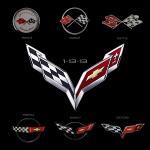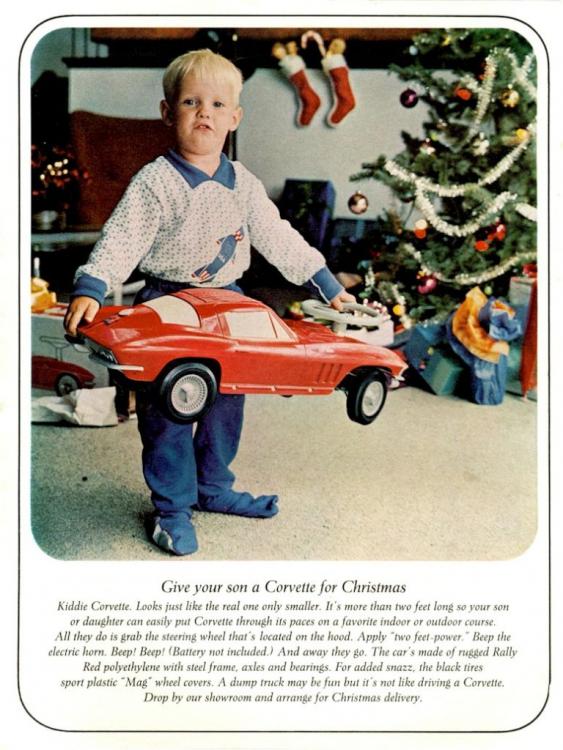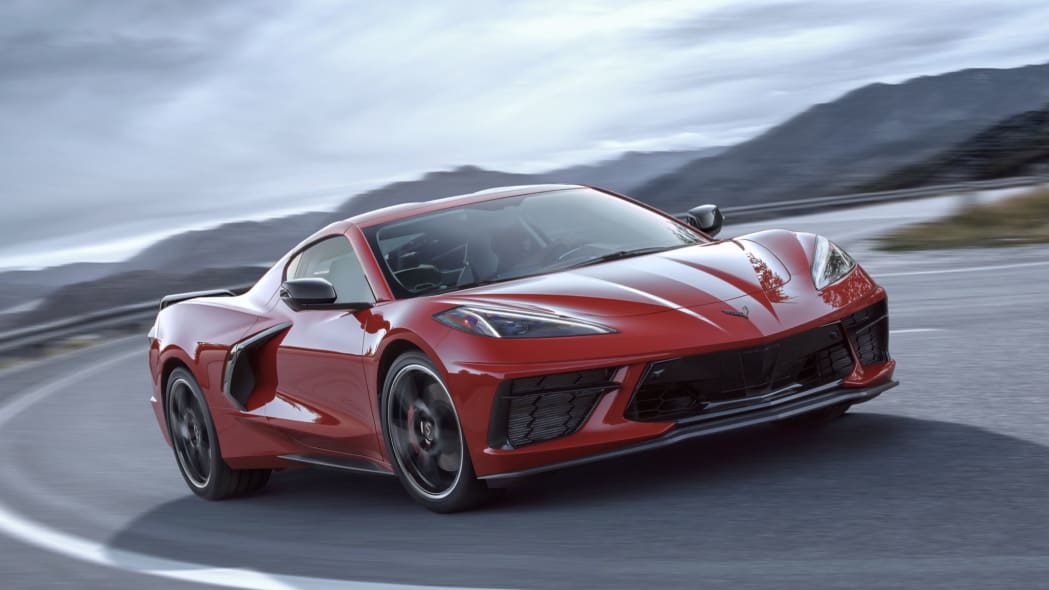
Click Here For The Corvette forum
Get Together
Where: Brick Mill Cafe on the Main North Road Waikuku
When: See Facebook For Details


Welcome to the History of the Corvette
GM began production of the esteemed Corvette in Bowling Green in 1981, and the facility has remained the exclusive home of the Corvette for over 30 years. Known around the world as America’s sports car, the Corvette exemplifies the definition of innovation. The Corvette is the world’s longest-running, continuously produced passenger car. When the first Corvette rolled off the line over 60 years ago, it was born an icon.
Corvette didn’t always call Kentucky home, however. In 1953, the first 300 were built by hand in Flint, Michigan, just after General Motors unveiled the Corvette as a “dream car” in the Motorama show in New York’s Waldorf Astoria hotel. The following year, production moved to St. Louis. In June of 1981, Corvette production transferred from St. Louis to Bowling Green, Kentucky.
Timeline of Corvette History - From the National Corvette Museum Kentucky
 C1: 1953 – 1962
C1: 1953 – 1962
- 1953. The first full-scale Corvette concept was displayed as a “dream car” at GM’s Motorama in New York’s Waldorf Astoria Hotel in January.
- 1953. On June 30, the first production Corvette rolled off of the assembly line in Flint, Michigan.
- 1953. Production of the 1954 Corvette began in St. Louis, MO in December of 1953.
- 1955. The small-block V8 displacing 265 cubic inches was introduced. Also, a three-speed manual transmission was available.
- 1956. The restyled Corvette features exposed headlamps, sculpted side coves and rolled up windows. Factory-installed removable hardtops are offered for the first time.
- 1957. Optional fuel injection and option 4-speed manual transmissions are offered for the first time.
- 1958. First time for dual headlights.
- 1960. The last year Corvette features tail lights formed into rounded rear fenders, and the last with heavy grill “teeth.”
 C2: 1963 – 1967
C2: 1963 – 1967
- 1963. The Corvette is a total restyle based on Bill Mitchell’s 1959 Sting Ray race car.
- 1963. First year for the Corvette coupe; only year for the split-window coupe. The Z06 is offered as an option on the 1963 Stingray (199 built).
- 1964. The split-window design is eliminated because it “intruded into the driver’s rearward vision.”
- 1965. Big Block V8 engines were introduced for the Corvette with the 396 CID L78 option. It was rated at 425 HP.
- 1966. Factory-installed driver/passenger headrests made their Corvette debut as optional equipment. First year for the 427 CID engine; up to 425 HP available. Holley Carburetors were standard with all engines.
- 1967. Optional L88 engine offered (only 20 produced).
- 1967. Standard features of the Corvette Sting Ray included an energy-absorbing steering column, four-way hazard warning flashers and a dual master cylinder brake system. Much of the exterior trim is removed or restyled, as well as the hood and fender vents.
 C3: 1968 – 1982
C3: 1968 – 1982
- 1968. The totally restyled Corvette features an industry first for production cars – “T-top” removable roof panels. Lines of the new Corvette closely resemble those of the Mako Shark II show car. Headlamps are now of the “pop-up” design, backlit.
- 1969. The 250,000th Corvette – a gold Convertible – comes off the St. Louis production line on November 19. “Stingray” script is added above the fender louvers.
- 1969. The ZR-1 optional factory-installed racing package is offered on Corvette for the first time.
- 1970. The new LT1 Small Block V8 engine option with solid lifters is introduced and rated at 370 HP.
- 1971. One of the least-changed models in appearance, Chevrolet essentially handled 1971 production as an extension of 1970.
- 1972. The last to feature both front and rear chrome bumpers, a bright egg-crate grill, side-fender grills.
- 1973. 4,000 serial numbers were never built, so the serial number ends with 34,464 but production totaled 30,464.
- 1977. The 500,000th Corvette – a white coupe with red interior – is produced in St. Louis on March 15.
- 1978. The fastback body style marks Corvette’s 25th year of production. The traditional crossed-flag emblem is replaced with a special anniversary emblem. The special edition of the Corvette is the Indy 500 Pace Car replica – silver and black.
- 1981. Mid-year, production shifted from St. Louis, MO to Bowling Green, KY. This was the first time a model was built in two locations simultaneously.
- 1982. The first Corvette model year to feature the convenience of hatchback design (introduced with the Collector’s Edition model). Four-speed automatic transmissions with overdrive is standard, with no manual transmission offered until well into the 1984 model.
 C4: 1984 – 1996
C4: 1984 – 1996
- 1984. The all-new Corvette has a drag coefficient of a 0.34… that’s 24 percent more aerodynamic than its predecessor. Top speed over 150 MPH.
- 1985. Big news for Corvette is the addition of tuned-port injection of the 230 HP 5.7 liter V8.
- 1986. The first convertible since 1975 is built.
- 1987. Callaway Twin-Turbo engine package introduced (RPO B2K).
- 1988. 35th Anniversary Edition is offered.
- 1990. The Corvette ZR-1 debuts. Driver’s side air bags become a standard feature. Groundbreaking of the National Corvette Museum in June.
- 1992. Performance of the Corvette’s new 300 HP 5.7 liter V8 engine is so impressive that it’s given the legendary LT1 designation. The One-Millionth Corvette – a white convertible with red interior, matching the first Corvettes of 1953 – rolls off the Bowling Green assembly line on July 2.
- 1993. 40th Anniversary package optional with all models – Ruby Red metallic exterior with Ruby Red interior.
- 1994. National Corvette Museum opens Labor Day Weekend.
- 1995. Corvette paces the Indy 500 for the third time (first in 1978, also in 1986).
- 1996. Two unique special Corvette models are available – a Collector’s Edition and a Grand Sport. The Collector’s Edition features Sebring Silver paint, Collector’s Edition emblems and an LT-1 engine. The Grand Sport has blue paint with a white stripe and red “hash marks” on the left-front fender with an LT-4 engine.
- 1996. Only 1,000 Grand Sports are made and it was only the second out of three times in Corvette history that a Grand Sport edition was made. It also provided an alternative for those seeking a little extra horsepower as 1995 marked the final production year of C4 ZR-1s.
 C5: 1997 – 2004
C5: 1997 – 2004
- 1997. Corvette featured hydroformed side frame rails, each made of a single piece of tubular steel. Transmission was rear mounted.
- 1998. For the first time since 1962 a separate trunk with outside access returned on the Corvette Convertible.
- 1998. A hardtop model with permanently-fixed roof panel and external trunk lid joins the Corvette family. The LS1 V8 engine in the 1999 Corvette delivers 345 HP.
- 1999. The LS1 V8 engine delivers 348 HP.
- 2000. Optional heads-up display offered.
- 2001. The Z06 is introduced with a 385 HP LS6 V8 and a top speed of over 170 MPH. New front fascia grilles improve airflow to the engine air inlet.
- 2002. Z06 performance reaches another plateau with the infusion of another 20 HP – for 405 – and 14 lb. ft. of more torque – for a total of 400.
- 2003. 50th Anniversary of the Corvette is marked by the availability of a 50th Anniversary package with special red paint, a unique two-tone shale interior, special emblems and Magnetic Selective Ride.
- 2004. Special commemorative package honoring Corvette’s success at LeMans are available. Corvette paced the Indy 500.
 C6: 2005 – 2013
C6: 2005 – 2013
- 2005. All new design and engineering. Powered by the new 6.0L 400 HP small block V8. Exposed headlights return for the first time since 1962.
- 2005. Power top option for convertibles for the first time since 1962. OnStar and navigation available for the first time. Corvette paced the Indy 500.
- 2006. Complete redesign of the Z06 after a one year absence. Powered by a new 7.0L (427 CID) small block V8 that produced 505 HP and 470 lb. ft. of torque. Six-speed paddle shift automatic transmission introduced.
- 2008. Powered by a new LS3 6.2L base V8 engine. Performance increased from 400 HP to 430 HP. Green E85 Z06 paced the Indy 500. Introduction of the leather-wrapped interior option.
- 2009. Debut of the new Corvette ZR1 powered by a super-charged 6.2L V8 which produces 638 HP and has a top speed of 205 MPH.
- 2010. Return of the Grand Sport model which included the base LS3 engine and Z06 level chassis. Side air bags standard on all models.
- 2011. Z06 Carbon Limited Edition offered to mark Corvette’s 50th anniversary at Le Mans. Exteriors limited to Supersonic Blue or Inferno Orange.
- 2012. Chevrolet Centennial Edition (available on all models), featuring Carbon Flash metallic paint, satin-black graphics, satin-black cup wheels with red stripe, unique badges, special-trimmed interior with red stitching and Magnetic Selective Ride Control.
- 2013. 60th Anniversary and a special 427 Convertible Collector Edition close out the C6 generation on a high note.
- 2013. Production of the sixth generation ceases February 28.

C7: 2014 – Present
- 2013. The seventh generation Corvette is introduced at an invitation-only reveal in Detroit on January 13. The Stingray designation returns.
- 2013. Indy 500 is paced by a 2014 Laguna Blue Corvette Z51 driven by San Francisco NFL coach Jim Harbaugh.
- 2013. Aluminum frames become the standard for all coupe and convertible models.
- 2013. Michelin becomes the exclusive tire supplier for Corvette.
- 2013. The Stingray features a LT1 V8 engine with 460 HP making it the quickest, most powerful standard Corvette to date.
- 2014. Chevrolet announces the return of the Z06, powered by a LT4 supercharged 6.2L aluminum V8 engine with 650 HP. It is the most track capable car yet, and the first to offer a supercharged engine, automatic transmission and convertible option.
- 2015. A new C7.R edition Z06 is offered for the 2016 model year, limited to a production of 500.




